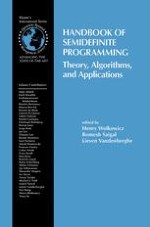Semidefinite programming (SDP) is one of the most exciting and active research areas in optimization. It has and continues to attract researchers with very diverse backgrounds, including experts in convex programming, linear algebra, numerical optimization, combinatorial optimization, control theory, and statistics. This tremendous research activity has been prompted by the discovery of important applications in combinatorial optimization and control theory, the development of efficient interior-point algorithms for solving SDP problems, and the depth and elegance of the underlying optimization theory.
The Handbook of Semidefinite Programming offers an advanced and broad overview of the current state of the field. It contains nineteen chapters written by the leading experts on the subject. The chapters are organized in three parts: Theory, Algorithms, and Applications and Extensions.
